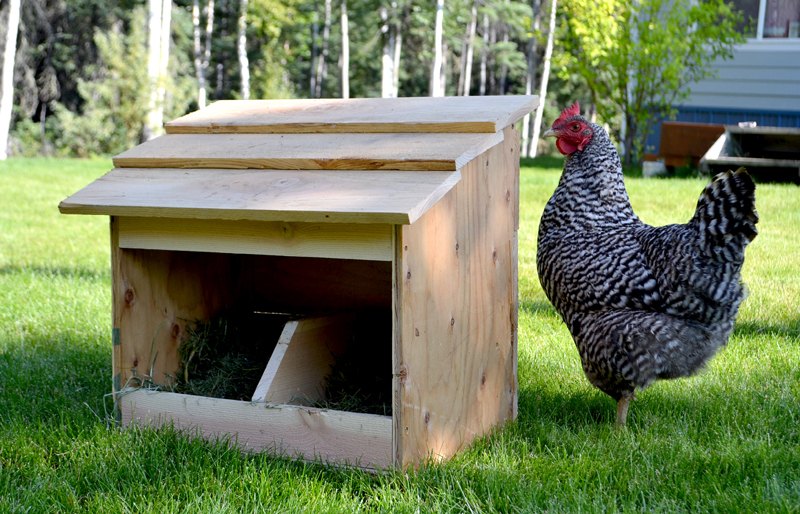The concept of insulated nesting boxes is gaining popularity among chicken enthusiasts and for good reason. These boxes not only provide a safe and comfortable environment for your hens to lay eggs but also help in regulating temperature and protecting the eggs from harsh weather conditions. In this article, we delve into the importance of these boxes and why they should be a consideration for every poultry keeper.

What Are Insulated Nesting Boxes?
At the heart of every thriving chicken coop lies the insulated nesting box. But what exactly are they? Simply put, these are specially designed boxes equipped with materials that provide insulation. This keeps the internal environment of the box at an optimal temperature, regardless of external weather conditions.
Benefits of Insulated Nesting Boxes
Temperature Regulation
Insulated nesting boxes are crucial for maintaining a consistent temperature. This is especially important during extreme weather conditions, such as the cold winter months or the scorching summer heat. By regulating temperature, these boxes ensure that eggs are kept at a stable environment, which is vital for their development and quality.
Protection from Predators
Another advantage is the added layer of protection against predators. The sturdy design of most insulated nesting boxes keeps unwanted visitors at bay, ensuring the safety of your hens and their eggs.
Improved Egg Quality
The quality of the eggs your hens lay can be greatly improved with the use of these boxes. The insulation helps in maintaining the right humidity levels and temperature, which are essential for producing high-quality eggs.
How to Choose the Right Insulated Nesting Box
Choosing the right insulated nesting box can seem daunting, but it doesn’t have to be. Consider factors such as size, material, and ease of cleaning. Ensure that the box is large enough to accommodate your hens comfortably. Additionally, opt for materials that are durable and easy to clean to make maintenance a breeze.
Materials to Consider
When it comes to materials, wood and metal are popular choices. Wood is a great insulator, but it requires regular maintenance to prevent rot. Metal, on the other hand, is durable and easy to clean, but it might not offer the same level of insulation as wood.
Size and Dimensions
The size of the nesting box should correspond to the size of your chickens. Larger breeds will require bigger boxes. Ensure there is enough room for the hen to move around comfortably without feeling cramped.
Building Your Own Insulated Nesting Box
If you’re a DIY enthusiast, building your own insulated nesting box can be a rewarding project. Not only will it save you money, but it also allows you to customize the box to suit your specific needs and preferences. For detailed instructions on how to build a chicken nesting box, visit this guide.
Essential Tools and Materials
Before you start, gather all necessary tools and materials. Essential items include wood, insulation material, screws, a saw, and a measuring tape. With these tools in hand, you’ll be well on your way to creating a cozy home for your hens.
Step-by-Step Instructions
Begin by measuring and cutting the wood to the desired dimensions. Assemble the frame, ensuring it’s sturdy enough to withstand the weight of the hens. Next, add the insulation material and finish by attaching the roof and entrance. For a detailed overview, check out the best materials for chicken nesting.
Common Mistakes to Avoid
When creating or purchasing insulated nesting boxes, there are common pitfalls to be aware of. Avoid using materials that are not weather-resistant. This could lead to deterioration over time. Additionally, ensure that the box is not too small, as this can cause stress to the hens.
Ignoring Ventilation
While insulation is important, so is ventilation. Proper airflow prevents the buildup of moisture and helps in maintaining a healthy environment for your chickens.
Maintenance Tips for Insulated Nesting Boxes
Maintenance is key to ensuring the longevity of your insulated nesting boxes. Regular cleaning and inspection will prevent the growth of bacteria and mold. For tips on maintaining a healthy environment for your chickens, explore this natural nesting behavior guide.
Cleaning Procedures
Begin by removing old bedding and debris. Use a mild detergent to clean the surfaces, and allow them to dry completely before adding fresh bedding. This helps in maintaining a sanitary environment for your hens.
Regular Inspections
Inspect the boxes regularly for signs of wear and tear. Check for any damages such as cracks or loose fittings, and repair them promptly to ensure the safety of your chickens.
Conclusion: The Importance of Insulated Nesting Boxes
In conclusion, insulated nesting boxes are an essential component of any chicken coop. They provide a safe and comfortable environment for hens to lay eggs, improve egg quality, and offer protection from predators and harsh weather conditions. By investing in these boxes, you’re ensuring the health and well-being of your chickens. For more insights on chicken care, visit the signs a hen is about to lay.

Frequently Asked Questions
What materials work best for insulated nesting boxes?
Wood and metal are the most common materials. Wood is a great insulator but requires maintenance, while metal is durable and easy to clean.
How big should an insulated nesting box be?
The box size should accommodate the size of your chickens comfortably. Ensure there’s enough space for the hen to move around without feeling cramped.
How often should I clean my nesting boxes?
Regular cleaning is essential. Aim to clean the boxes weekly to prevent the buildup of bacteria and maintain a healthy environment.
This article contains affiliate links. We may earn a commission at no extra cost to you.










